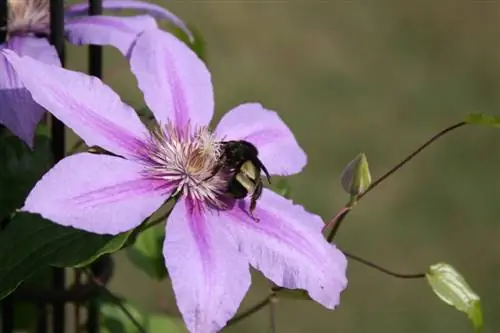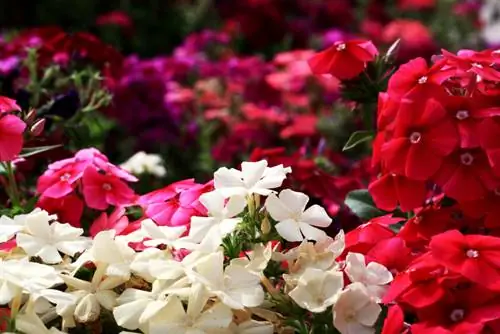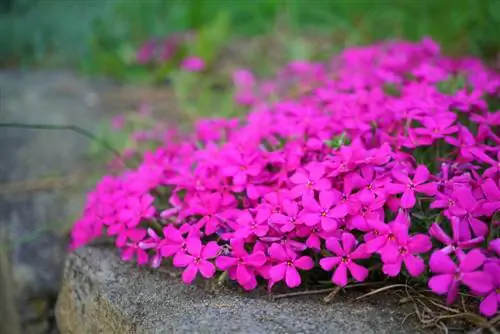- Author admin [email protected].
- Public 2023-12-16 16:46.
- Last modified 2025-01-23 11:20.
Environmentally conscious hobby gardeners always keep an eye on the relevance of bee-friendly plants for natural diversity. In this respect, Clematis is considered a prime example of the lush little table setting for busy pollinators. Get to know the most beautiful species and varieties of clematis as a bee pasture here.

Which clematis are particularly bee-friendly?
Clematis that are bee-friendly come in both early and late-blooming species and varieties. These include Clematis montana 'Rubens', Clematis alpina 'Ruby', Clematis 'The President', Clematis viticella and Clematis Ascotiensis 'Bicolor'. They provide nectar and pollen to bees and other insects.
Early flowering species and varieties
Bees depend on a continuous supply of pollen and nectar throughout the entire growing season. Just a few days without food means starvation for these busy insects. How good that the clematis has species and varieties that develop their flowers early in the year. The following overview presents the most beautiful early-blooming clematis for the garden:
- Clematis montana 'Rubens': within the Montana group one of the most beautiful varieties with delicate pink flowers from May
- Clematis alpina 'Ruby': robust clematis, shade tolerant, enchanting purple-pink flowers from April to June
- Clematis macropetala: a Chinese wild species that bees fly to, with pink and white flowers from April
The undisputed star among the spring-flowering hybrids with huge blue flowers is the world's top variety 'The President'. The magnificent specimen climbs up to 3 meters on the trellis and opens its 18 centimeter flowers for bees, bumblebees and butterflies from May onwards.
Late blooming clematis for the bee-friendly garden
As the summer blooms come to an end, busy bees keep an eye out for fresh sources of pollen and nectar. Ideally, the tireless insects will now find a clematis in the garden that is just unfolding its flowers. The following clematis bloom well into September:
- Clematis Ascotiensis 'Bicolor': an old variety from Japan that also thrives in pots thanks to its low height growth
- Clematis viticella: all varieties of Italian clematis are recommended as bee-friendly, magnificent climbing plants
- Clematis Abundance scores with small, flat flowers that are easy to harvest by bees and bumblebees
Tips & Tricks
Bees don't attach much importance to the size of the flowers. As a rule, it is the small-flowered wild species that provide a rich buffet of pollen and nectar. The particular advantage for the hobby gardener is that these species and varieties of clematis are extremely resistant to the dreaded clematis wilt.






